How to Melt Ice Naturally
Easy, natural ways to melt ice around your home this winter!
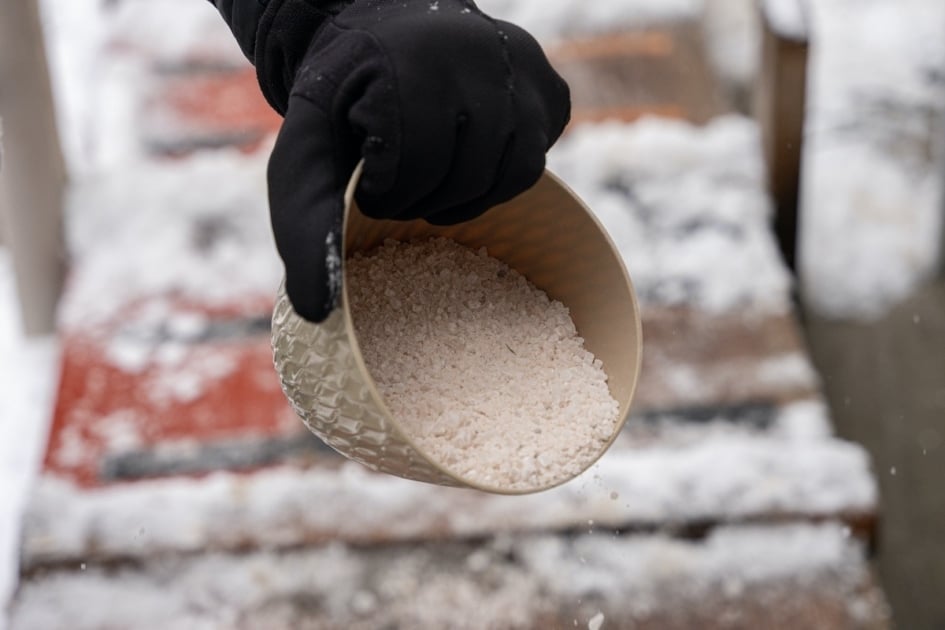
Ice and snow can be beautiful to look at, but no fun at all to clean up. All it takes is one injury from a slip and fall accident to take the wonderland right out of winter. Since very few of us have heated driveways, here’s a look at a few popular natural solutions for melting ice around your home.
4 Ways to Melt Ice Naturally
1. Salt
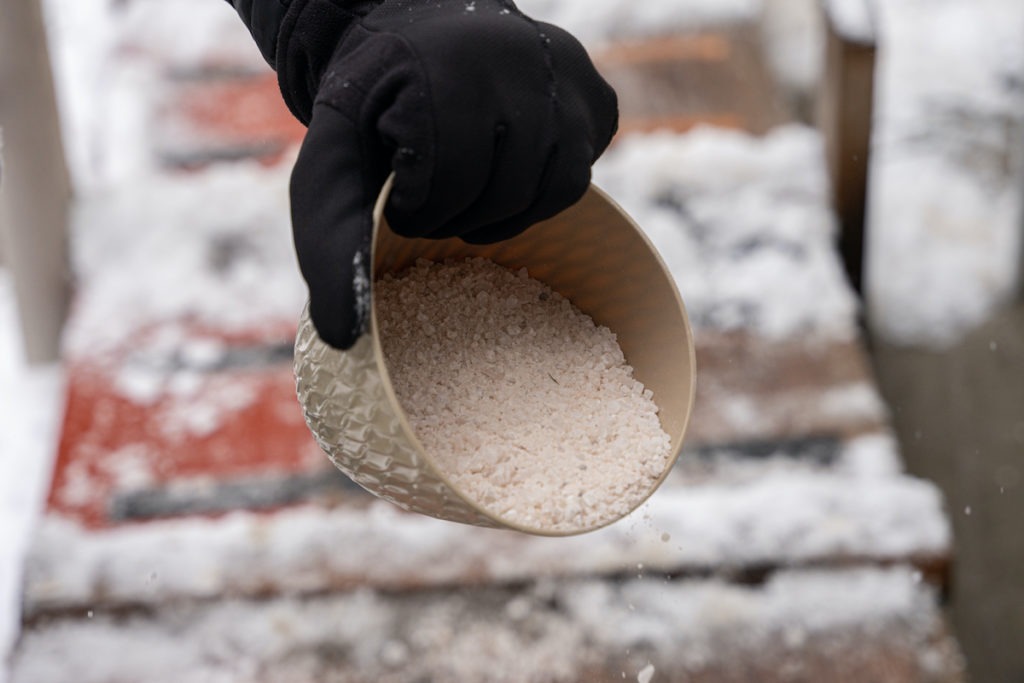
Probably the best-known solution for melting ice, salt is inexpensive, easy to find, and very effective. It comes in a variety of forms, from basic rock salt to liquid solutions, each of which works under different ideal conditions and temperatures. Though salt is a naturally occurring substance, it should be handled with care. Using salt to melt ice has many drawbacks. Salt is a corrosive material that can damage metal and fabric, among other things, which can shorten the life of your car, clothing, carpeting, etc. Salt can also dry out and injure skin, including the pads of pets’ paws. Runoff from salted roads, driveways, and sidewalks can also enter into groundwater, affecting drinking water quality. Grass and shrubs planted near heavily salted areas can also suffer.
Keep in mind that salt isn’t effective in very low temperatures. If your temps drop to 10 degrees F and below, salt isn’t a good choice. Also, check the ingredients—the salt may be mixed with other chemicals to improve its ice-melting abilities.
2. Urea
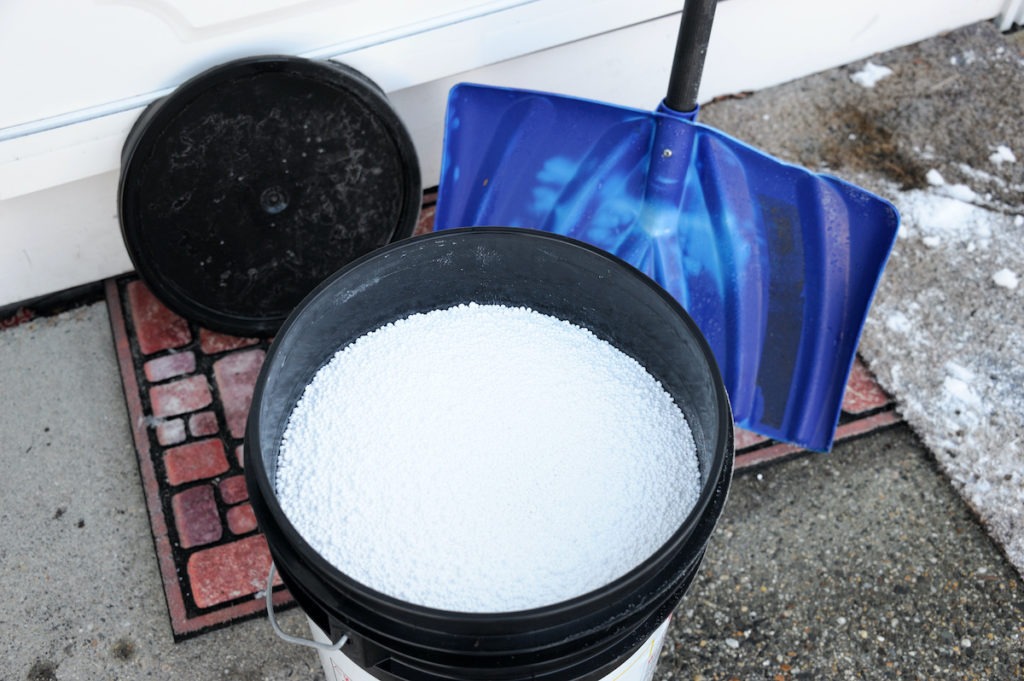
After salt, urea is probably the most commonly used deicer. A natural fertilizer, urea is less corrosive than salt, and is safer for pets. Because it is a liquid, it also requires less cleanup than rock salt. However, urea can be even more damaging to plants than salt, because the high concentration used for deicing burns plants, just like over-fertilizing does during the growing season. Even more troubling, the high levels of nitrogen in urea can cause algae blooms in nearby lakes, ponds, and rivers.
3. Alfalfa Meal
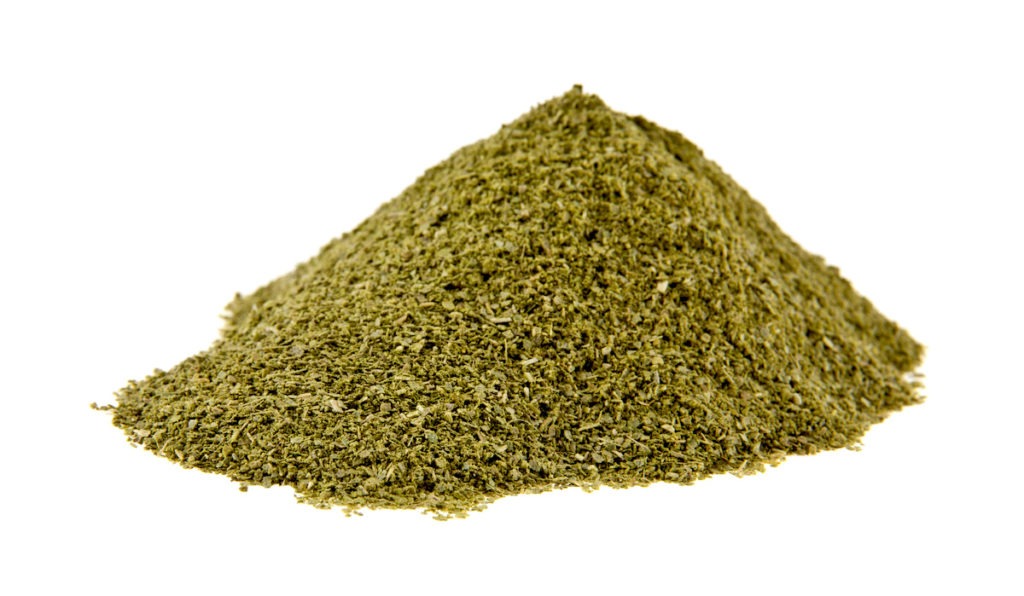
A lesser known, but highly effective, ice melting substance is alfalfa meal. Like urea, alfalfa meal is 100% natural, and like urea its primary use is as a commercial fertilizer. Alfalfa meal does contain nitrogen, which is what makes it an effective fertilizer, but it contains this element in lesser concentrations, making it less of a threat to local water systems when used in moderation. Because it is dry and grainy, like salt, alfalfa meal has the added benefit of creating additional traction while it’s working on melting the ice. Bags of alfalfa meal can be purchased at most hardware and gardening stores.
4. Sugar Beet Juice
On its own, or used to dilute salt solutions, the juice from sugar beets can lower the freezing point of water, and help to deice slippery roads, driveways and sidewalks. In recent years, some communities have even been using beet juice mixtures to melt ice on municipal roads. It can be effective to temperatures of -20 degrees F. Though using beets to melt ice has caused some to scratch their heads, the odorless and virtually colorless substance is completely harmless to humans, animals, plants, cars, fabrics, and water systems. But you can’t open a jar of beets and pour it on your driveway to get the same results. It requires a special purchase from garden centers, or online.
Read about how to walk safely on ice and learn how to fall!
Add Some Traction
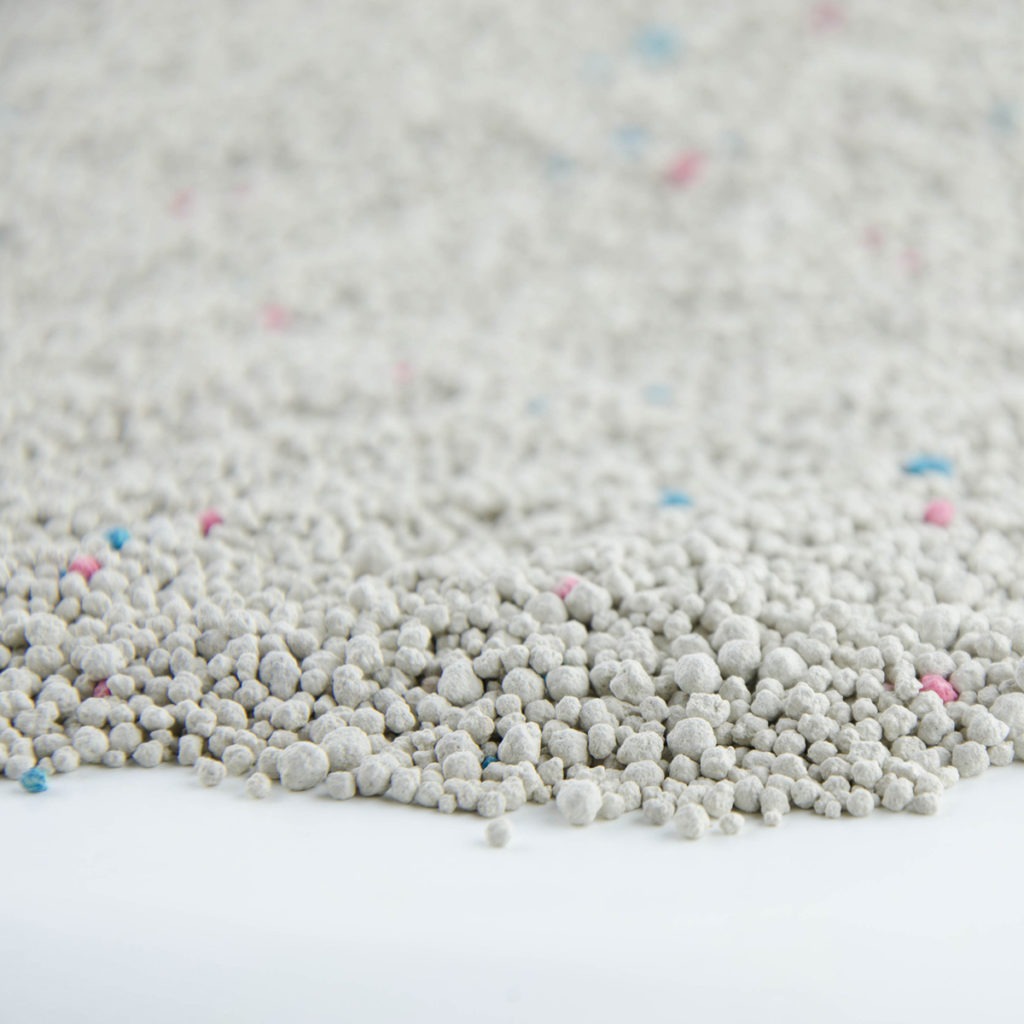
Of course, the most natural way to melt ice is to just let time, and nature, take its course. If you live in a relatively temperate area, it may not take long for ice to melt on its own. In far northern areas, you may be waiting a lot longer. In either case, you can make icy areas safer to walk or drive on simply by adding a bit of traction. Sand, wood ash, non-clumping clay-based kitty litter, used coffee grounds, and sawdust are all naturally occurring substances that can add traction to slick surfaces. Cover your entire driveway and walkway, or save money by creating small footpaths where you need to walk.
Check out these other winter hacks you’ll love!

Jaime McLeod
Jaime McLeod is a longtime journalist who has written for a wide variety of newspapers, magazines, and websites, including MTV.com. She enjoys the outdoors, growing and eating organic food, and is interested in all aspects of natural wellness.






Sprinking Poultry grit on outdoor walkways helps with traction where ice is. If poultry grit is on the floor in the house do not use a vacuum cleaner to remove it. Sweep the granules up with a broom instead and dispose the grit in the garbage bin. It could damage a household vacuum cleaner.
Great tip – thank you for sharing!